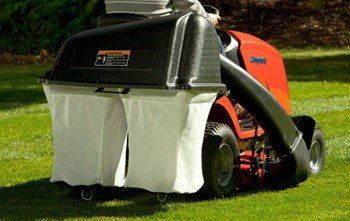
When the grass is growing at full pace, mowing the lawn can be a time-consuming task. Some individuals like it, while others simply want to get it done. Adding an additional step to the task by bagging grass clippings and stopping to empty the bagger raises the dilemma of what to do with the grass clippings. Experts agree that if you follow a few basic methods to maintain your lawn healthy, you won’t need to bag your grass clippings.
Getting Rid of Thatch
Some people claim that putting grass cuttings on the lawn generates too much thatch beneath the grass. That is not the case, according to Iowa State University Extension and Outreach. Too much fertilizer or pesticide use, overwatering and inadequate drainage, and poor aeration all contribute to thatch, which is a coating of plant debris made up of grass stems, dead grass, leaves, and roots.
Although a little coating of thatch is beneficial, thatch that is more than 1/2 inch thick can damage a grass. The extension services advocate power raking or verticutting, as well as utilizing a core aerifier, to remove thatch. Aerating the grass improves its ability to absorb fertilizer and water. Grass cuttings will harm a lawn with thatch issues, so get rid of the thatch first. Early in the fall, dethatch cool-season lawns, and early to mid-summer, dethatch warm-season lawns.
Mowing Techniques That Work
Cutting the grass short is not recommended by the University of Minnesota Extension. Cut the grass into longer lengths of about 3 inches. Use a sharp blade to ensure that the grass cuts evenly and does not become sick. Mow at least once a week when the grass first sprouts in the spring and for a few weeks afterward to keep the clippings from becoming too long. Grass clippings that are 1 inch long or less will not harm the lawn since they will decompose fast and provide nutrients to the grass.
Keeping Your Lawn in Good Shape
Because a healthy lawn absorbs nutrients from grass clippings, it’s critical to keep it in good shape. Newly planted grass should be watered often, while existing lawns should be watered to a depth of 6 inches. Water the lawn once or twice a week, preferably in the morning for optimal absorption. Feed the lawn with manure compost or a commercial fertilizer. If the grass is infected, bag the clippings until the situation improves.
But, if you prefer to bag. We suggest you to:
- Don’t forget to fertilize your garden. Fertilizer is the only method for your lawn to get the nutrients it needs to be healthy if you don’t use grass clippings.
- Make sure your bagger isn’t too full. You don’t want your bagging system to become clogged. What a disaster. For further information, consult your Bagging System Service Manual.
- If you have a lawn that hasn’t been mowed in a long time, side discharge or mulch mowing might cause thatch, clumping, grass disease, and possibly dry areas. In this situation, securing a bag is the best option. The sooner you start, the better.
Sum Up
In summary, the only method to reduce the amount of grass clippings is a machine that cuts it into smaller pieces. Bagging is best for people with tight budgets and does not allow anyone using the bagger to control how much material goes in.
(If you decide to use bagger, you might love to read our assesment about bagger)
Machine mulching has automatic systems which makes this operation more efficient and controlled than manual bags.
Conclusion
Don’t want to be scavenging all of the time? Bagging isn’t your thing? You’re not on your own. Others choose to employ grass clippings to supplement a lawn’s nutrition while reducing fertilizer consumption.
Even the most ardent bagger fan should be aware that, at least some of the time, you may prefer to leave your clippings on the grass once you’ve finished mowing. In the long term, it will assist your grass stay healthy and lush.
